FAQ
Is the pantomogram a picture of the lower or upper teeth?
Pantomogram is a picture of a panoramic view of all teeth, equally "upper", as well as "lower". Interestingly, in young children you can see as many as four species of teeth - two series of milk teeth (so-called milk teeth) and hidden teeth.
Will the doctor know if any further examinations are required?
Diagnosis is an essential part of treatment. Both dentists and ENT specialists should know when to refer a patient and to which examination. Doctors cooperating with DIAGDENT are offered assistance in reading the examination results and advise on the type of follow-up examination, if necessary.
Why can't I wear gold jewellery?
Gold, despite its nobility, is also a metal. For imaging examinations, all metal elements within the examined area should be removed, i.e., in the case of dental and ENT radiology within the area of the head and neck. Their presence disturbs the course of the rays, as a result of which the examination image may be blurred and inaccurate. We assure you that everyone will look great on the images at DIAGDENT, even without jewellery!
Do I also have to take off my plastic jewellery for the examination?
Although some types of plastic will not interfere with the image during the examination, most of them may affect the quality of the image and the readability of the examination. That is why we always ask you to remove any plastic jewellery as well. In our opinion, it is not worth risking the need for another examination, which will be associated with a waste of time and additional costs.
Is it necessary to come to DIAGDENT on an empty stomach?
You do not have to fast for the examinations at DIAGDENT, nor do you have to be prepared for them. You only need to take off your jewellery and remove any dentures or braces that are in your mouth.
Are such examinations harmful to health?
Radiological examinations use X-rays, which can be harmful if taken in large doses and in an uncontrolled manner. At DIAGDENT laboratories, patient safety is of paramount importance. While performing examinations, we use the smallest possible amount of radiation that does not endanger life and health. The requirement to show a referral from the doctor limits the number of visits to the minimum required to plan proper treatment.
Is CT dangerous?
At DIAGDENT, we use the latest and safest CT equipment known worldwide for minimising the radiation dose needed to perform a high-quality examination. CT in our facilities is not dangerous to health.
Do you perform examinations on children? Are they harmless?
We also welcome the youngest patients to our facilities. During the visit, we ask for a referral for the examination and for the guardian to sign a consent for the child to undergo the examination. Imaging diagnostics in our centres is completely safe also for children.
I am pregnant. Can I come in for an examination?
Due to the possible undesirable effects of ionising radiation, X-ray examinations of pregnant women can only be performed in justified cases and if they cannot be carried out after childbirth. The decision to perform an X-ray examination on a pregnant woman can only be made by a doctor or an X-ray technician; the patient's consent alone is insufficient.
Do I have to follow any restrictions after the examination?
After the examination, you can return to your daily routine and activities. There are no additional recommendations or restrictions to follow.
Do you perform an ultrasound of the maxilla?
At DIAGDENT, we perform CBCT scanning of the maxilla, X-ray and CT of the temporomandibular joints. We do not perform an ultrasound of the temporomandibular joint.
Do you perform X-rays of the spine, hand, foot...?
We invite you to the DIAGDENT laboratory for imaging examinations of the head (craniofacial) only, which are referred to by dentists and laryngologists. Types of offered examinations can be found in our price list.
Why is my PESEL (Polish Resident Identification Number) required?
Your personal information, including the PESEL number, is part of your medical records; therefore, providing this information is a statutory requirement that applies to all patients. If you do not have a PESEL number, you are asked to provide the type and number of your identification document.

![]()
![]()
![]()
![]()
![]()
![]()


